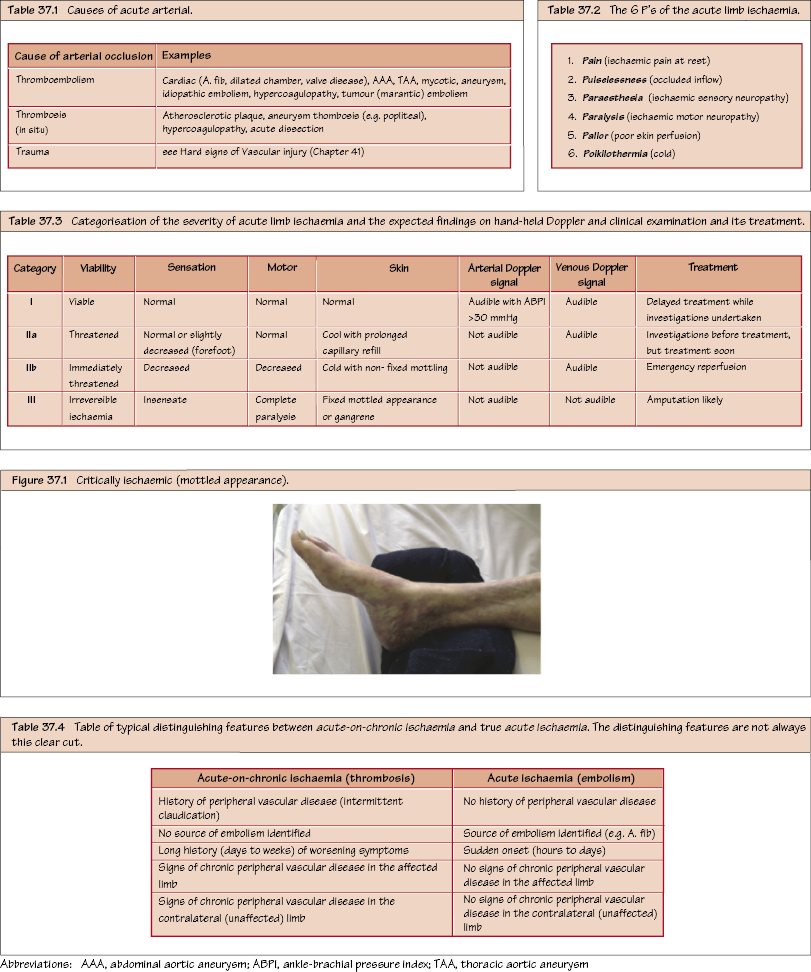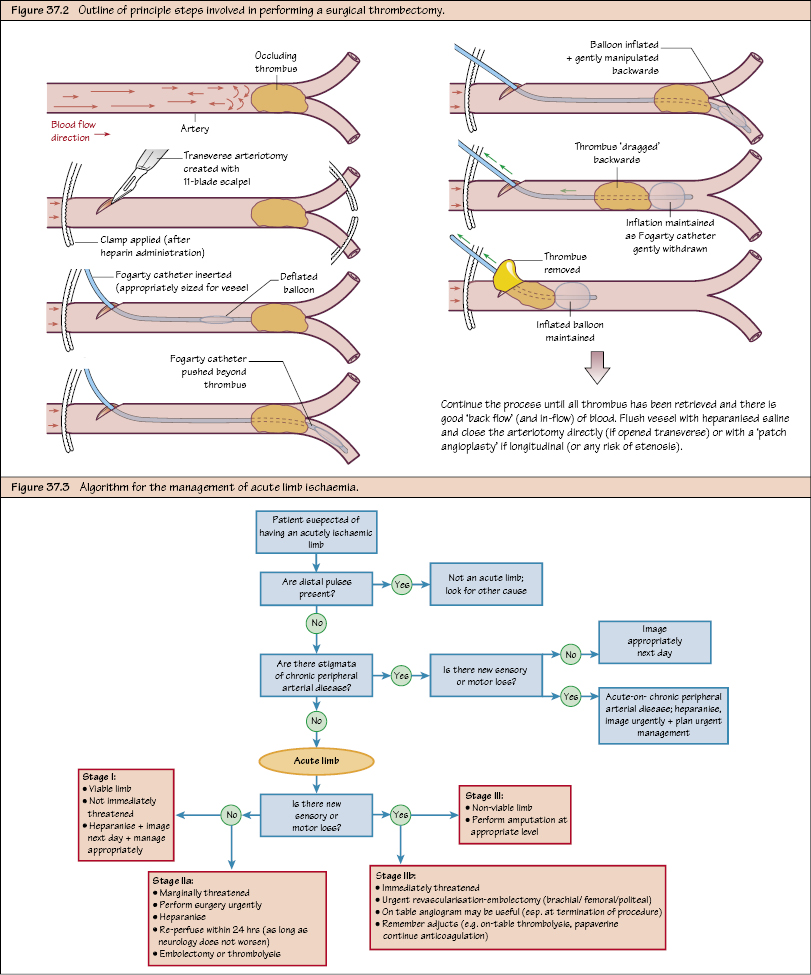The Acute Limb The acute limb describes the sudden deterioration in the blood supply to a limb leading to acute ischaemia and threatened viability. This occurs at the sites of branching vessels: The salient feature of the acute limb is pain! It can be difficult to decide between pain from an acute limb and pain from deteriorating PVD (see Table 37.1), but in general the acute limb will have: Rest pain coupled with neurology (decreased sensation or motor function) mandates emergency treatment!


Aetiology
Common Sites of Occlusion
Symptoms and Signs
Complications of the Acute Limb
Ischaemic Window
Stay updated, free articles. Join our Telegram channel

Full access? Get Clinical Tree


